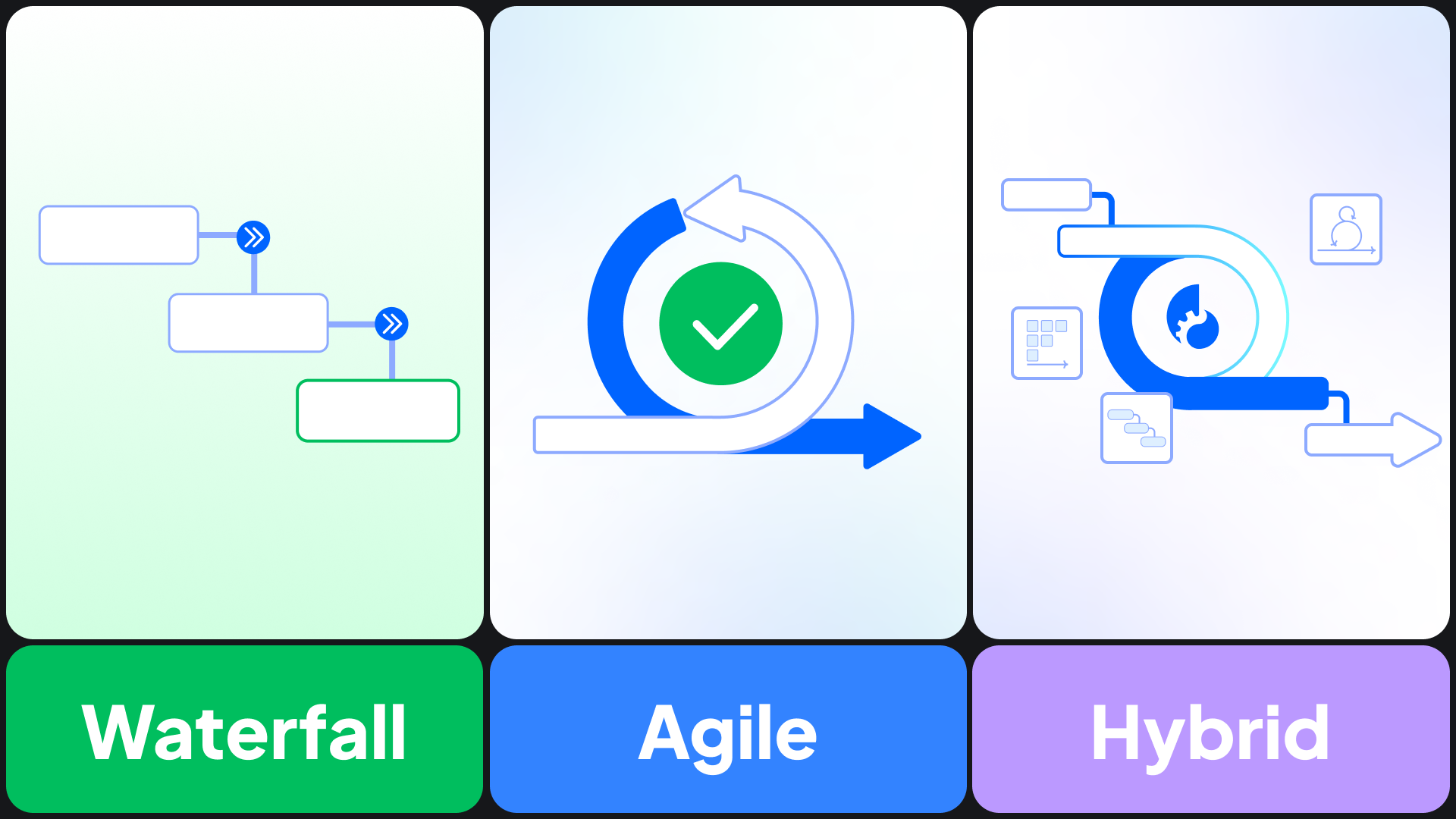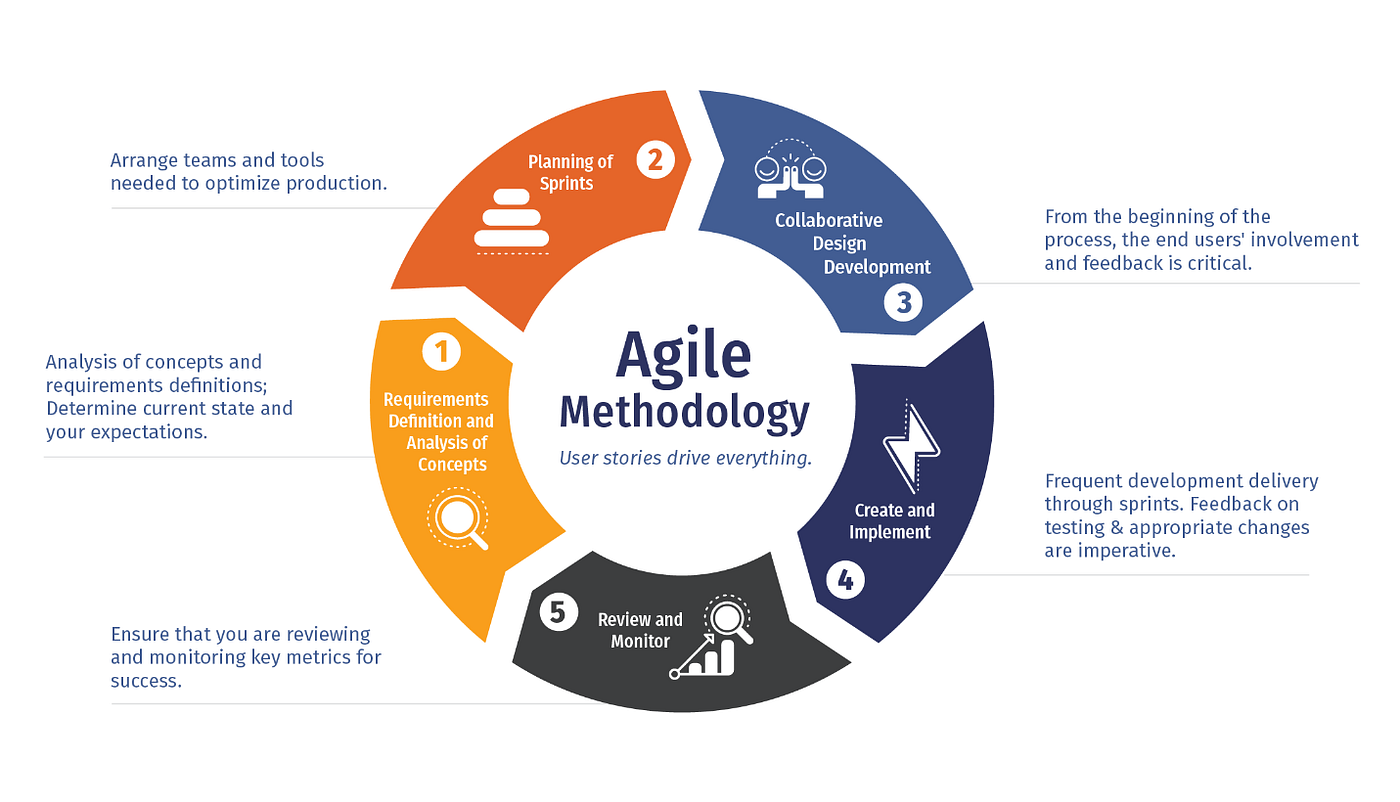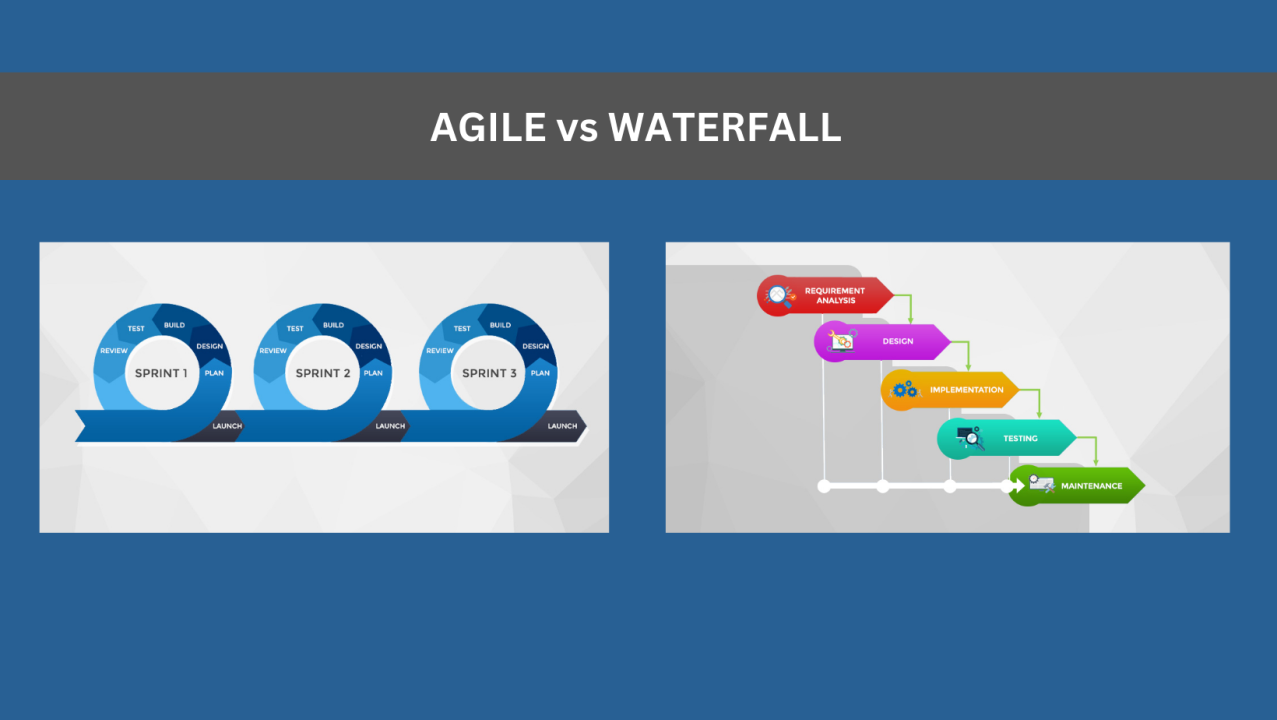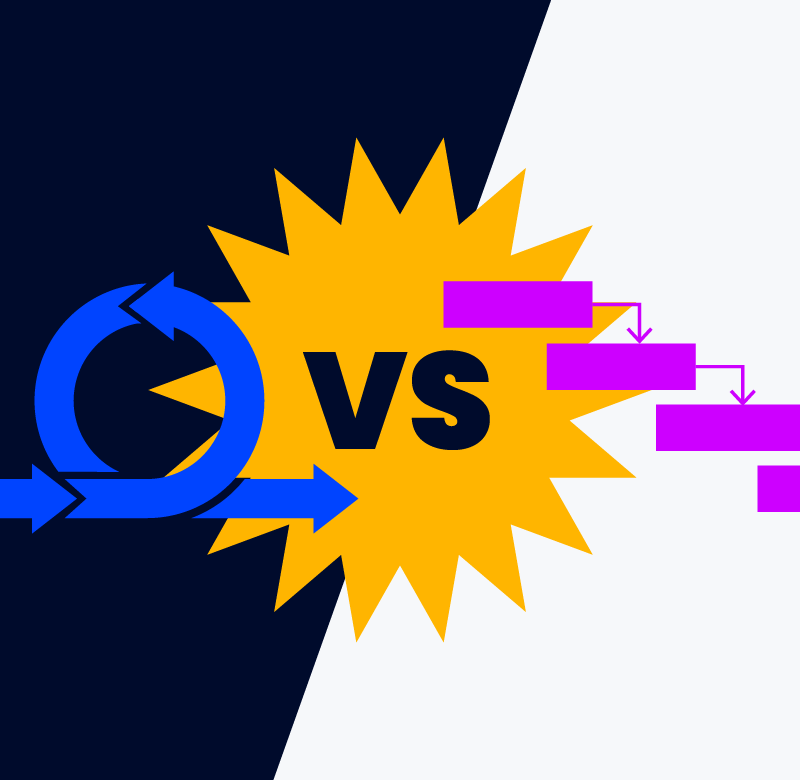Best Guide to Waterfall vs Agile vs Hybrid Methods
In the dynamic world of project management, it’s crucial to understand the methodologies that drive success. Among these, Waterfall, Agile, and Hybrid models stand out as popular choices, each with its unique approach and benefits. But how do you know which one is right for your project?
In this article, I’ll delve into the specifics of these methodologies, comparing and contrasting their features to help you make an informed decision. Whether you’re a seasoned project manager or a newbie in the field, you’ll find valuable insights that can shape your project management strategy. So, let’s dive in and explore the world of Waterfall, Agile, and Hybrid models together.
Understanding Waterfall, Agile, and Hybrid Methodologies

Building on our exploration of project management strategies, let’s delve deeper into the unique traits of Waterfall, Agile, and Hybrid methodologies. Understanding the specifics of each approach will aid in identifying the most suitable methodology for different projects.
Key Characteristics of Waterfall
Waterfall methodology, as the name suggests, is a linear approach where stages flow logically from one to the next, much like a waterfall. At its root, there are 5 main stages typically seen in a Waterfall approach – Requirement Gathering, Design, Implementation, Verification, and Maintenance. For instance, the Requirement Gathering stage precedes Design, ensuring that the blueprint of a project aligns with stakeholders’ needs.
Key Characteristics of Agile
Contrarily, the Agile method promotes flexibility, with projects broken into manageable units called sprints. It’s primarily characterized by iterative development, where requirements and solutions evolve through the collaborative efforts of cross-functional teams. Additionally, customer involvement becomes a key tenet in the Agile approach. For example, feedback from customers after each sprint assists in refining the project requirements, enhancing the final outcome.
Introducing the Hybrid Approach
Hybrid methodologies mean amalgamation—the best of both Waterfall and Agile rolled into one approach. These often involve initial planning stages traditional to the Waterfall method, followed by the iterative execution found in Agile methodology. In practice, a Hybrid approach might entail outlining initial requirements and designing a broad plan before delving into Agile’s flexible development cycle for execution. This creates an environment both structured for clarity and flexible to changes.
Advantages and Disadvantages of Waterfall

Let’s delve into the practical aspects of the Waterfall methodology, breaking down its pros and cons.
Pros of Waterfall Methodology
A key advantage, understanding the project scope upfront, promotes a streamlined project trajectory. Constant progress tracking and distinct project stages lend themselves to regular analysis, allowing for potential corrections of course along the way.
- Precise Expectations: The Waterfall methodology outlines requirements and objectives at the beginning of a project. This blueprint eliminates ambiguity, setting definitive tasks for the project team.
- Simplified Progress Monitoring: Since the stages are acutely defined, I find progress tracking remarkably straightforward. Tasks are completed in a sequence, thereby rendering comparisons with the initial deadlines a breeze.
- Structured Approach: This methodology adopts an orderly, cascading flow. It brings an aura of predictability to the process, concluding one phase before moving to the next.
Cons of Waterfall Methodology
Despite its appealing structure and clarity, the Waterfall methodology isn’t without shortcomings. In essence, its linear nature and scope rigidity can present challenges when changes need to be made after project commencement.
- Limited Flexibility: Once a project kicks off, adjusting scope or reverting phases in Waterfall seems arduous. It’s cemented and reversing decisions can lead to wasted time and resources.
- Testing Delayed till End: Testing, a crucial part of any project, often gets pushed back towards the end of the cycle with the Waterfall model. If bugs are revealed then, it might force the team to revisit past stages leading to delays and budget overruns.
- Dependency on Previous Phases: Every stage in the Waterfall approach is contingent on the successful completion of the preceding one. This could prove stagnant in case of any bottlenecks in the project pipeline.
Advantages and Disadvantages of Agile

Let’s pivot to discussing Agile, a popular project management approach, and investigate its merits and drawbacks.
Pros of Agile Methodology
- Streamlined Process: Agile’s iterative model fosters streamlined project management. It allows teams to identify issues in the earlier stages of development, leading to faster resolution.
- Active Stakeholder Engagement: By emphasizing regular communication, Agile keeps stakeholders actively engaged. This constant involvement ensures stakeholders’ insights and feedback are valued.
- Flexible and Adaptable: Agile methodology exhibits high levels of flexibility. As project requirements evolve, Agile adapts, making it very beneficial in dynamic environments.
- Risk Mitigation: Regular testing in Agile helps detect errors early, thereby mitigating risks associated with project failures.
- Customer Satisfaction: Agile’s focus on customer needs and continuous improvement often leads to the delivery of high-quality products, boosting customer satisfaction.
Cons of Agile Methodology
Yet, Agile isn’t without its drawbacks. Here are some key challenges associated with Agile:
- Requires Experienced Teams: Agile demands teams who are skilled and experienced. Without expertise, it can result in confusion and inconsistent execution.
- Limited Documentation: An Agile project can lead to insufficient documentation as it prioritizes working software over comprehensive documents.
- Dependency on Customer Input: Timely and meaningful customer feedback is crucial in Agile. Absence of regular feedback could potentially cause delays or wrong iterations.
- Difficult to Estimate Costs: Estimating the cost and duration of Agile projects can be tricky due to its flexible and iterative nature.
- Complex Project Management: Managing complex projects using Agile can be challenging as it requires robust coordination to synchronize all the tasks.
By understanding these facets of Agile, you can gauge how it contrasts and aligns with Waterfall and Hybrid methodologies, facilitating a more informed decision-making process for your future projects.
Blending the Best of Both: The Hybrid Approach

In an attempt to capitalize on the strengths of both Waterfall and Agile, a new player emerges: the Hybrid methodology. It serves to navigate the terrain of project management with an innovative blend.
What Makes Hybrid Different?
A key distinction, setting Hybrid apart, lies in its mix-and-match philosophy. Embracing the structured planning stages of Waterfall and incorporating Agile’s iterative execution stages, it flexes its duality. This novel method presents a planned pathway accompanied by iterative tweaks. It’s like setting forth on a planned route, while having the freedom to adjust it as changes occur. Hence, Hybrid adapts to dynamic conditions, creating room for modifications without derailing the overall plan, combining predictability and flexibility.
Utilizing milestones, a characteristic of Waterfall, structures the project lifecycle. But instead of adhering to a stiff structure, it provides leeway, courtesy of Agile, for revisions. In a nutshell, a hybrid approach is a marriage of structure and adaptability, embodying the best of both worlds.
When to Consider Hybrid Methodology
Project type and scenario dictate whether a Hybrid approach remains suitable. For large scale projects requiring comprehensive planning but also leaving room for alterations during execution, Hybrid shines. It offers a compromise between rigidity and fluidity, allowing for thorough planning while being responsive to changes.
Consider Hybrid when project requirements are clear, but the end product entails continuous refinement. For instance, enterprise-level software development, where plans change frequently due to evolving customer needs, reveals the effectiveness of Hybrid. Leveraging this approach, both the linear, organized structure of Waterfall and the flexible, customer-focused execution of Agile seamlessly fuse.
There you have it—the Hybrid approach borrows well-regarded traits from both Waterfall and Agile. This combination results in a model that is unpredictable yet meticulous, helpful for projects that demand structure, but where adaptation to change is the norm.
Waterfall vs Agile: A Comparative Analysis

When examining Waterfall and Agile methodologies, it’s paramount to comprehend how each framework aligns with project context.
Project Size and Complexity Considerations
In terms of project size and complexity, Waterfall methodology excels in well-defined, low-complexity projects. Waterfall’s sequential approach, it’s easy to map the progression of these projects from conception to completion. Consider construction projects, for instance, which have detailed blueprints and adhere to a strict timeline, as a fitting use case for Waterfall.
Contrarily, Agile methodology shines when handling projects with high levels of complexity. Since it’s iterative and customer-centric model allows flexibility, Agile is ideal for projects where requirements evolve throughout the project lifecycle. For example, technology-related projects, like creating a new software platform, are often a good fit for Agile due to the evolving nature of requirements in the tech landscape.
Risk Management and Flexibility
For Risk management, Waterfall methodology might appear risky due to its linear structure. Changes in the course of the project can be costly and can affect the project timeline negatively. For instance, if a design flaw is found late into the process in a construction project, it could lead to significant delays and increased costs.
However, Agile counters this flaw with a higher degree of flexibility. By adopting an iterative approach with regular feedback loops, Agile allows project teams to quickly adapt to changes and rectify issues without much disruption. For example, in a software development project, if a feature doesn’t satisfy the end user, Agile methodology allows the team to modify it in subsequent iterations, mitigating the risks associated with one-time, bulk deliveries.
By analyzing both methodologies, one can discern that Agile offers more flexibility and better risk management while Waterfall provides a well-structured, sequential approach suitable for less complex projects. The choice between Waterfall and Agile often hinges on the project’s characteristics and specific requirements. However, the Hybrid methodology combines the best of both worlds, offering flexibility with a planned approach, remaining an enticing choice for many project types.
Waterfall vs Hybrid: Choosing the Right Fit

Choosing the most apt project management methodology can be a challenge. Factors like project size, time constraints, and resource availability dictate the right approach. In this article section, let’s look into two popular methodologies: Waterfall and Hybrid. The former focuses on structured, sequential progress, and puts predictability on the forefront. The latter, however, allows more room for adaptation, incorporating elements from both structured and flexible approaches. Let’s dissect these two to help you find the right fit.
Predictability vs Adaptability
Waterfall and Hybrid methodologies differ greatly when it comes to predictability and adaptability. Waterfall methodology, grounded firmly in a sequential, structured approach, provides a high degree of predictability. For instance, the construction of a bridge follows a linear progression where each phase depends on the completion of the previous one, ensuring predictability. However, it’s less adaptable to changes or unexpected events during the project lifecycle.
Contrarily, the Hybrid methodology employs an adaptable approach, as it melds structured planning of the Waterfall and flexible execution of Agile. Typical application of Hybrid methodology can be noted in large-scale software development projects, where it accommodates any changes in requirements during various stages, enhancing adaptability. In essence, this methodology combines the predictability of Waterfall with the adaptability of Agile, offering a balanced modus operandi.
Resource Allocation and Time Management
Effective resource allocation and sharp time management stand as pivotal considerations while choosing a project management methodology. Waterfall, with its rigid yet clear structure, facilitates straightforward resource allocation and time management. One can allocate resources and time at the onset, adhering to a pre-established schedule. This works brilliantly for projects like manufacturing a car, where every process is well-defined and resources are set from the outset.
On the contrary, the Hybrid methodology permits more dynamic resource allocation and time management. It lets you tweak your resources and time as the project evolves, incorporating unforeseen changes seamlessly into the project plan. That’s what makes Hybrid more suited for projects like app development, where requirements often evolve and timelines are more fluid.
In the end, your project’s unique context sets the direction for your choice. Whether it requires more predictability, as with Waterfall, or more adaptability, as with Hybrid, making an informed decision will ultimately serve your project’s success.
Agile vs Hybrid: The Better of Two Agile Worlds?

Embracing Uncertainty and Change
In agile methodology, change isn’t merely tolerated; it’s expected and welcomed. As development unfolds, business needs often evolve dynamically. Agile methodology capitalizes on these changes to add value to the final product. For example, software developers often integrate new capabilities into their projects, providing flexibility to adapt to changing requirements.
Comparatively, hybrid methodology also puts stock in adaptability. The added advantage lies in its capacity for tighter control during initial project design, a trait borrowed from waterfall methodology. This blend of flexibility and control, for example, is apparent in many large-scale hotel renovation projects, where unforeseen changes, such as unexpected structural issues, may arise mid-project. Thus, the key to choosing between agile and hybrid hinges on the nature of your project’s variable factors and whether a stronger early-stage control serves your purpose.
Maintaining Control and Structure
Control and structure come naturally in waterfall and hybrid methodologies. The waterfall method, with its strong emphasis on planning, is an example frequently seen in a linear assembly line of products in an industrial setup, where every stage of production is well-defined and control measures are strict.
Meanwhile, hybrid retains this structural setup but is not as rigid as the waterfall model. Integrating an iterative approach, it introduces flexibility within these structured stages. Picture this as a series of sprints within a long race, where each sprint, though part of the main race, has its own start and end. The choice between waterfall and hybrid, then, depends on your project’s primary demands – the need for strong upfront control versus a balance between control and flexibility.
In the end, project success isn’t about choosing one methodology over another, but about understanding your project needs and selecting the optimal process accordingly.
Conclusion
Choosing between Waterfall, Agile, and Hybrid methodologies isn’t a one-size-fits-all decision. It’s about understanding your project’s unique needs. If predictability is your priority, Waterfall might be your best bet. However, if you’re dealing with a project that demands flexibility and adaptability, Agile could be the way to go. On the other hand, if your project requires a blend of both predictability and adaptability, the Hybrid methodology is worth considering. It’s crucial to remember that no methodology is inherently superior to the others. Each has its pros and cons, and the right choice depends on your project’s specific requirements. So, don’t hesitate to reassess your project needs, and choose the methodology that aligns best with them. After all, the ultimate goal is successful project completion.
Frequently Asked Questions (Faqs)
What are the main advantages and disadvantages of Waterfall and Agile?
Waterfall offers a structured approach with high forecastability but less flexibility, making it ideal for contained projects like constructions. Agile provides flexibility and adaptability, perfect for unpredictable projects with variable factors.
What does Hybrid methodology mean?
Hybrid methodology combines the structured planning inherent in Waterfall with the iterative execution found in Agile. It provides both predictability and flexibility, making it suitable for projects like large-scale software development or renovations.
How does Agile differ from the Hybrid approach?
Agile capitalizes on dynamic changes during the project’s lifecycle, offering a high level of adaptability. The Hybrid approach combines the agile adaptability with some semblance of initial control, found in structured methodologies like Waterfall.
Which methodology is more rigid: Waterfall or Hybrid?
While both methodologies aim to maintain control and structure, Waterfall is more rigid due to its stringent planning and low adaptability compared to the flexibility offered by the Hybrid model.
How should one decide the right methodology for a project?
The key lies in understanding the project’s specific needs and choosing the appropriate process to align with these requirements. The decision addresses factors like required predictability, adaptability, resource allocation, and time management.

Leave a Reply